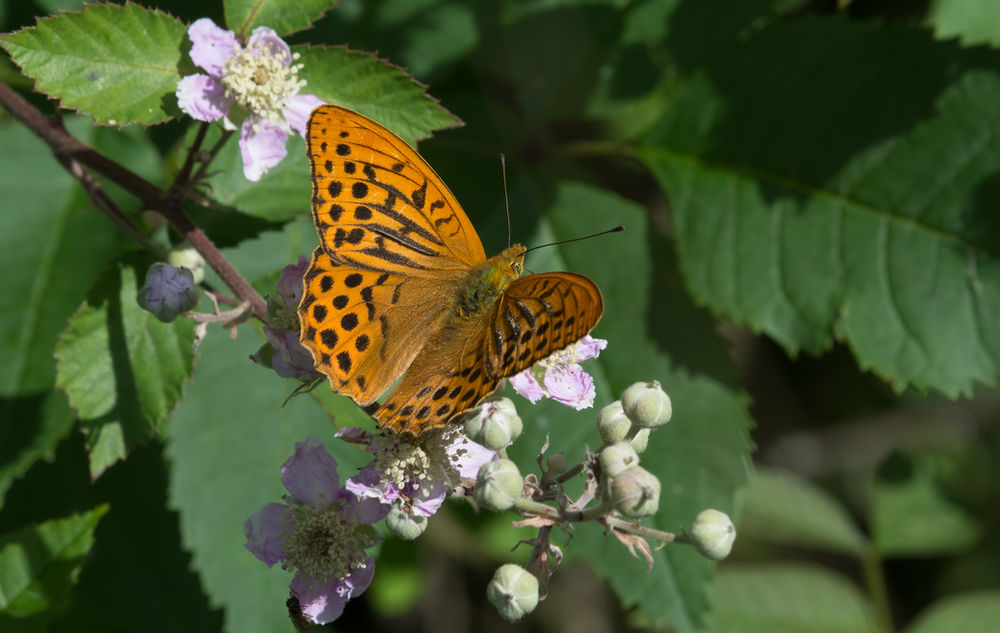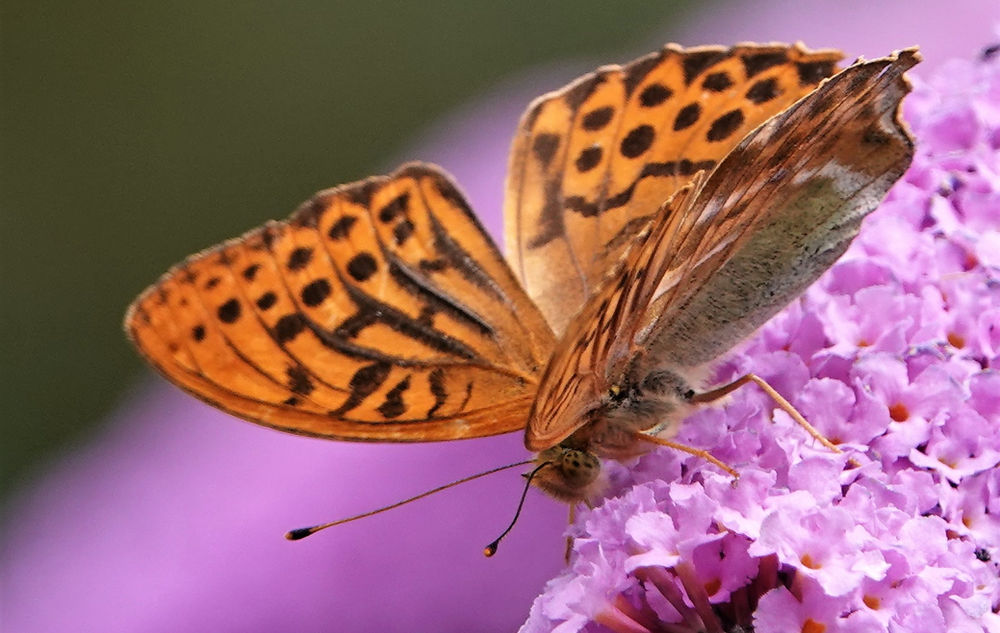top of page
Argynnis paphia is a strong flier, and more active than most other fritillaries. Because of this, it can be seen gliding above the tree canopy at high speed. Its preferred habitat is thin, sunny, deciduous woodland, especially oaks, but it has been known to live in coniferous woods as well.
The female, unlike most other species, does not lay her eggs on the leaves or stems of the caterpillar's food source. Instead, she deposits them one or two meters above the woodland floor in the crevices of tree bark close to clumps of violets.
When the eggs hatch in August, the caterpillars immediately go into hibernation until spring. Upon awakening, they drop to the ground, and feed on violets close to the base of the tree.
The caterpillars usually feed at night, and usually
conceal themselves during the day away from the food source. During cool weather, they will bask in sunny spots on the forest floor on dry, dead leaves. They will pupate in the ground vegetation, and the adults will emerge in June.
This butterfly is deep orange with black spots on the dorsal side wings, and the male is smaller and paler than the female. The ventral side is bluish green with a somewhat metallic gloss and broad silver bands which are partially curved, giving it the name Silver Washed.
In the male the forewings are somewhat pointed where on the female they are more rounded. On females of the minority Valesina form, seen in most European populations, the ground color is not fawn but grey with greenish reflections.
The caterpillar is black to brown with two yellow lines along its back and long reddish brown spines.
The male has scent scales on the dorsal side of the forewing that run along veins one to four as three distinct scent streaks. The scent produced from these scales attracts females and helps to distinguish it from other species.

Diet: caterpillars feed primarily on the Common Dog Violet .
Diet: adults feed on the nectar of Bramble, Thistles, Knapweeds, and also on Aphid Honeydew
Wingspan: 54 – 70 mm / 5.4 - 7 cm / 2.12 - 2.75"
Family: Nymphalidae


The single biggest threat to butterfly survival is habitat destruction!!
bottom of page





